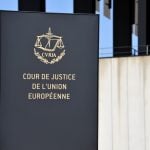In another ground-breaking case, the Singapore High Court has set aside an investor-State arbitral award on the basis that the tribunal exceeded its jurisdiction. This case follows on from the recent judgment in Sanum Investments Ltd v Government of the Lao People’s Democratic Republic [2016] SGCA 57, in which the Singapore Court of Appeal found that an investor-State arbitral tribunal did have jurisdiction to hear claims against the Government of Laos. It further demonstrates the willingness and competence of the courts of Singapore to deal with issues concerning public international law and investment arbitration.
Background
The facts underlying the High Court’s judgment in Kingdom of Lesotho v. Swissbourgh Diamond Mines Pty. Ltd. & 8 Others [2017] SGHC 195 concerned investments made in the late 1980s by a South African businessman, together with his associated companies and trusts, in diamond mines located in Lesotho, an independent enclave completely surrounded by South Africa. The investors alleged expropriation of their investments and commenced proceedings in 2009 before a standing tribunal established under the 1992 Southern African Development Community Treaty (the “SADC Tribunal” and “SADC Treaty” respectively). However, the SADC Tribunal was dissolved prior to reaching a resolution of the expropriation claims, following a diplomatic backlash arising from previous decisions against Zimbabwe in wholly unrelated proceedings. Importantly, Lesotho had approved the resolutions that led to the dissolution of the SADC Tribunal.
Following failed efforts to resurrect the SADC Tribunal, the investors instead brought fresh proceedings in 2012 under a protocol to the SADC Treaty which had come into force in April 2010 (the “Investment Protocol”). The Investment Protocol provided for disputes between an investor and a State Party to be resolved by international arbitration, provided that the dispute in question arose after entry into force of the Investment Protocol. In order to satisfy this requirement, the investors alleged additional breaches of the SADC Treaty, namely that Lesotho had participated in the “shuttering” of the SADC Tribunal without providing alternative means for the investors to pursue their expropriation claims, thereby contravening its obligations to provide “fair and equitable treatment” (Article 6) and “access to courts and tribunals” (Article 27), among others.
An ad-hoc tribunal was established to hear the dispute, administered by the Permanent Court of Arbitration (“PCA”) and with its seat in Singapore. In April 2016, a majority of the three-person tribunal found Lesotho to have breached the SADC Treaty and granted relief to the investors in the form of a “partial final award” requiring that a new tribunal be established to hear the expropriation claims, with the same jurisdiction as the SADC Tribunal prior to is dissolution. A separate costs award was issued in October 2016, ordering Lesotho to pay the investors’ costs.
Application to Set Aside
The application before the High Court was the first in which a party requested the Singapore courts to set aside an investor-State arbitral award on the merits. The Court of Appeal’s Sanum judgment had also involved a set aside application, but concerned a preliminary award on jurisdiction only. This meant that different provisions of the Singapore International Arbitration Act were engaged.
Lesotho sought to set aside the award in its entirety on a number of grounds, which can be summarized as follows:
- The tribunal lacked jurisdiction ratione temporis – the real dispute in question concerned the alleged expropriation. This dispute predated the Investment Protocol and was therefore outside the scope of the arbitration clause;
- The tribunal lacked jurisdiction ratione materiae – the dispute did not meet the various requirements set out in the SADC Treaty and Investment Protocol including the requirements that the dispute concerned “an obligation… in relation to an admitted investment”;
- The tribunal lacked jurisdiction ratione personae – several of the associated companies and trusts that comprised the investors were not capable of qualifying as “investors” under the SADC Treaty; and
- The claim was inadmissible – the investors had to exhaust local remedies before bringing a claim, but had failed to do so.
In terms of procedure, Lesotho applied for the award to be set aside either under § 10(3) of the Singapore International Arbitration Act (the “IAA”) or, in the alternative, under Article 34(2)(a)(iii) of the UNCITRAL Model Law on Commercial Arbitration (the “Model Law”), which is incorporated into Singapore law by virtue of § 3(1) of the IAA. The investors insisted that the High Court did not have jurisdiction to set aside the award under either of these provisions.
The High Court agreed with the investors that § 10(3) of the IAA did not apply to the current application, since it only permits the High Court to review a positive ruling on jurisdiction where this has been dealt with by the tribunal as a preliminary question. Since the tribunal had issued a “partial final award” dealing with both jurisdiction and the merits, Lesotho could not rely on this provision to set aside the award.
However, the High Court agreed with Lesotho that it had jurisdiction under Article 34(2)(a)(iii) of the Model Law to set aside the award. While the drafting of Article 34(2)(a)(iii) refers to circumstances where the final award deals with a dispute “not falling within the terms of the submission to arbitration” or “contains decisions on matters beyond the scope of the submission to arbitration”, the High Court held that it applied equally to circumstances where the final award exceeded the scope of the arbitration agreement itself. In reaching this decision, the High Court undertook a review of past Singapore case law and legal commentary on the nature and purpose of Article 34(2)(a)(iii), ultimately deciding that “as a matter of policy, to hold that Art 34(2)(a)(iii) does not apply, where no other limb under Art 34(2) would be engaged, would allow an arbitral tribunal to immunize its awards against judicial scrutiny by delivering its conclusions on both jurisdiction and merits in a single award”, which would have been an “unsatisfactory result”.
Temporal Jurisdiction
Having determined that it had jurisdiction to consider the application, the High Court then went on to assess the various grounds for setting aside the award. It first considered Lesotho’s submission that the investors’ characterization of the dispute as one related to the shuttering of the SADC Tribunal was merely an “artifice” and that the true dispute concerned the alleged expropriation of mining leases, which was outside the temporal scope of the Investment Protocol. Having undertaken a comprehensive critique of the investment treaty case law adduced by the parties, the High Court distilled three key considerations that need to be borne in mind when determining whether a dispute submitted to arbitration should be regarded as distinct from a pre-existing dispute:
- whether the two disputes involve the same factual or legal disagreement – the High Court held that the substantive disagreement in the expropriation claim was distinct from the substantive disagreement in the shuttering dispute. The breaches being alleged arose under different provisions of the SADC Treaty;
- whether the two disputes have the same “real cause” – the High Court held that, while the expropriation dispute provided the factual backdrop to the shuttering dispute, the real cause of the shuttering dispute was Lesotho’s actions in relation to the SADC Tribunal, not its alleged expropriation of the mining leases; and
- whether the two disputes target or centre on the same conduct – the High Court held that different actors were responsible for the respective breaches. The alleged expropriations were primarily attributable to the Commissioner of Mines, whereas the alleged shuttering of the SADC Tribunal was primarily attributable to the political leadership of Lesotho.
The High Court drew analogies with the circumstances of Chevron v Ecuador[1] and ATA v Jordan,[2] where the actions of the judiciary amounted to denials of justice distinct from the underlying causes of action being alleged. Accordingly, the High Court found that the shuttering dispute was a distinct dispute that arose after the Investment Protocol came into force and so the tribunal had not exceeded its temporal jurisdiction.
Subject-Matter Jurisdiction
As for the subject-matter jurisdictional challenges, the High Court considered whether there was an “investment”, whether such investment had been “admitted” and whether the dispute in question concerned an “obligation in relation to” the admitted investment. The SADC Treaty contains a relatively precise definition of “investment” and does not include a broad chapeau such as “every kind of asset, including…” that is commonly adopted in investment treaties. Having analyzed the ordinary meaning, textual context and various legal commentaries on the definition of investments, the High Court interpreted the definition under the SADC Treaty to encompass only “rights or property acquired in the host State arising under its domestic laws”.
Given that the shuttering dispute concerned the “secondary right” to bring a claim before the SADC Tribunal, rather than the investments in the mining leases themselves, the High Court struggled to conceptualize how this could fit within the restrictive terminology used in the SADC Treaty. The “awkwardness” of characterizing this secondary right as an “investment” was further exacerbated by the requirement that the investment be “admitted”. The High Court did not accept the tribunal’s characterization of the secondary right as part of the “bundle of rights” created by the mining leases, since the right to bring a claim before the SADC Tribunal had been “conferred” by the SADC Treaty (in 1992), after the original investments were made (in 1988) and therefore could not be seen as “sufficiently connected” or even “deriving from” the mining leases. Accordingly, the High Court held that the investors’ secondary right to refer disputes to the SADC Tribunal was not an “admitted investment” for the purposes of the SADC Treaty.
The High Court also had difficulty interpreting the requirement that any dispute referred to arbitration under the Investment Protocol had to concern an “obligation” of the host State which existed “in relation to” the purported investment. While the obligations to afford “fair and equitable treatment” and “access to courts and tribunals” might be construed “in relation to” the mining leases, the relevant investment for the purpose of the shuttering dispute was the secondary right to bring a claim before the SADC Tribunal. The High Court considered the tribunal’s attempts to link the treaty obligations to the secondary right to be “contrived and unnatural” and accordingly rejected them.
Personal Jurisdiction
The tribunal had determined that all nine claimants were capable of being “investors” under the SADC Treaty, but also acknowledged that several of the investors had assigned their claims. Accordingly, the tribunal had only granted relief to three of the investors in the partial final award. While the High Court considered the personal jurisdiction challenges to be largely academic in circumstances where it had already found there to be no “investments”, it nonetheless scrutinized the tribunal’s reasoning on this issue, disagreeing that the SADC Treaty covered domestic as well as foreign investors.
Admissibility
As to the allegation that the investors had not exhausted local remedies before commencing their claim, the High Court gave consideration to general principles of public international law and, in particular, the guidance contained in the International Law Commission’s Draft Articles on Diplomatic Protection. It held that any such remedies must be both “available” and provide “effective redress” in order for the investor to be criticized for non-exhaustion. However, it also held that “the mere absence of judicial authority showing that the remedy would be available does not justify concluding that it is unavailable”. In practice, this meant that once Lesotho had established that a particular remedy might theoretically be available, the burden of demonstrating that it was not available in practice was shifted to the investors.
Lesotho asserted that the investors could have pursued either a tortious claim for pure economic loss (known as an “Aquilian” action) or a public law claim, but had not done so. The tribunal had found that neither of these options would have provided “effective redress”, since the primary remedy for the shuttering claim was to provide the investors with an opportunity to have their expropriation claim heard and the domestic courts simply did not have the power to order such a remedy. The High Court disagreed with the tribunal, holding that shuttering of the SADC Tribunal amounted to a loss of opportunity, which could be addressed by any remedy that compensates for the loss of that opportunity. While it may require “a significant extension” of the existing case law for Lesotho’s courts to recognize an Aquilian claim by the investors, it sufficed that this was an avenue open to them. Accordingly, the investors had failed to exhaust local remedies.
Conclusions
As a result of its analysis, the High Court held that the tribunal’s award dealt with a dispute not contemplated by and not falling within the terms of the submission to arbitration and therefore set aside the award in its entirety under Article 34(2)(a)(iii) of the Model Law.
As the judgment acknowledges, this case engaged “intriguing” questions of arbitral and international investment law which had not yet been considered by a Singapore court. The investors have indicated that they intend to appeal the judgment, but unless and until the Singapore Court of Appeal provides its own analysis of these issues, this case will sit alongside the Sanum judgment as a benchmark case for future investment arbitrations seated in Singapore.
It is important to note that the definition of “investment” and the conceptual difficulties experienced by the High Court in interpreting this provision turned on the particular language of the SADC Treaty and may not be commonly encountered. The analysis regarding exhaustion of local remedies may attract some debate, since the law on this issue is far from settled and the High Court was willing to accept the possibility of an Aquilian action, while acknowledging that there was no direct authority confirming its availability in the Lesotho courts.
As for the wider impact of the judgment, it demonstrates the willingness and competence of the courts of Singapore to deal with issues concerning public international law and investment arbitration. Following on from the Sanum[3] and Philip Morris[4] cases and together with the launch of the SIAC Investment Arbitration Rules and the recent establishment of regional offices for both the PCA and ICC in Singapore, it suggests that investment arbitration is on the rise.
[1] Sanum Investments Ltd v Government of the Lao People’s Democratic Republic, PCA Case No. 2013-13
[2] Philip Morris Asia Limited v Commonwealth of Australia, PCA Case No 2012-12
[3] PCA Case No 2007-02
[4] ICSID Case No ARB/08/2





